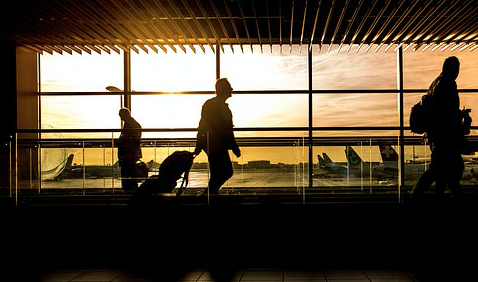Travel
Travelers’ Biometric Embrace

In less than two years, the United States, along with Canada and Mexico, will host the 2026 FIFA World Cup—the largest in history. This event kicks off a decade of global sporting events—from soccer, to F1 racing, to rugby, and two Olympics—that will be hosted in this country, ultimately resulting in high levels of attention and large volumes of international travelers. All coming on top of a growing travel sector that has proven resilient after the challenges of Covid-19 and has helped drive a remarkable economic recovery.
These events will simultaneously increase international visitors by millions and spur domestic travel demand. Even this summer’s smaller Copa America soccer tournament—consisting of 16 teams from across the Western Hemisphere—increased arrivals from participating countries by 11% compared to 2023. Meanwhile, we saw record-breaking travel volume this summer, including on July 7, when TSA screened more than three million travelers for the first time in its history. It’s likely three million travelers a day will be the norm when the U.S. hosts the World Cup at 11 cities across the country.
In order to successfully manage the security and operational challenges associated with increasing travel demand, the government must embrace—much like the American people—innovative technology. Biometric technology is a gamechanger when it comes to transportation security.
Many airport security checkpoints still employ the ‘bartender method’: A visual comparison of an ID to the individual standing before you—an inaccurate, unreliable system. TSA’s biometric technology is a vast improvement. First and foremost, the technology confirms with near certainty—over 99% accuracy—that the traveler is who they say they are. Secondly, it verifies the traveler’s flight and screening status—alerting the TSA officer if the individual is enrolled in TSA Precheck or requires additional screening. Lastly, it includes near real-time vetting of the traveler’s identity against the government’s security databases to catch bad actors before they pose a threat to the traveling public.
Americans have demonstrated they understand the value that using biometrics offers to keep air travel safe and security lines moving quickly. According to a recent survey conducted by U.S. Travel and Ipsos, four out of five travelers support the use of biometric technology at TSA security checkpoints. Travelers polled certainly welcome the efficiency benefits of the technology, with nine in 10 saying they would be more likely or equally likely to support biometric use if it reduced the typical time it takes to get through security, but they cited stopping terrorism and human trafficking as well as making airports safer as the top two reasons for supporting biometrics—even above their own convenience.
The government must be prepared to facilitate growing travel demand especially with the decade of global sporting events—and the millions of travelers it will bring—headed our way. Investment in innovative technology, like biometrics, that improves both security and operational efficiency is a critical part of the solution. It’s more effective, sustainable and scalable than trying to expand infrastructure and staffing capacity to accommodate increased travel volume. Americans recognize the value of this game-changing technology and want more of it.










